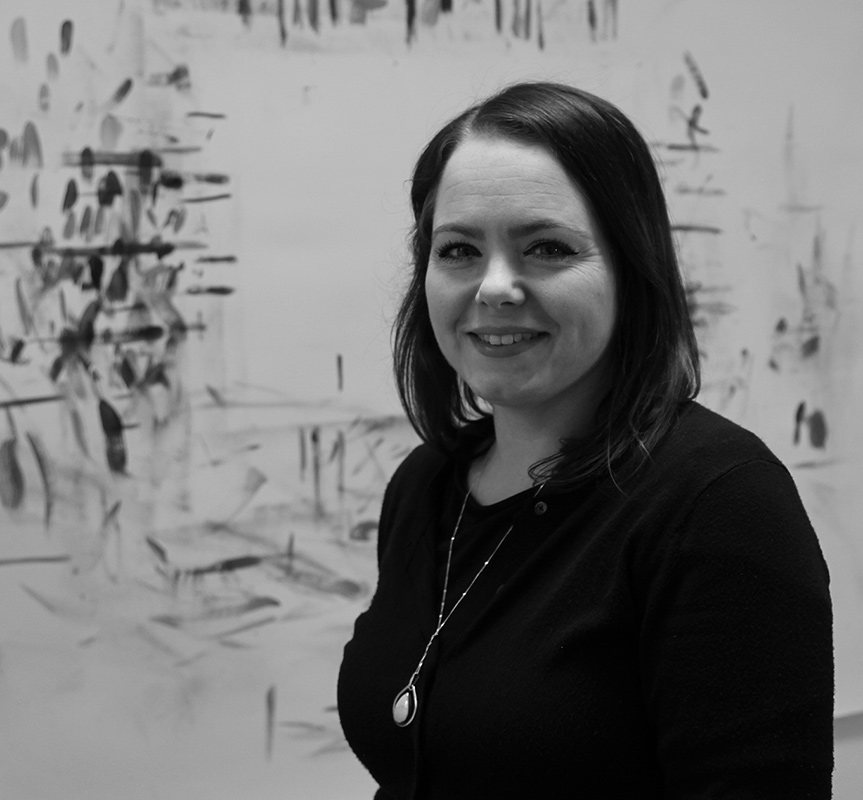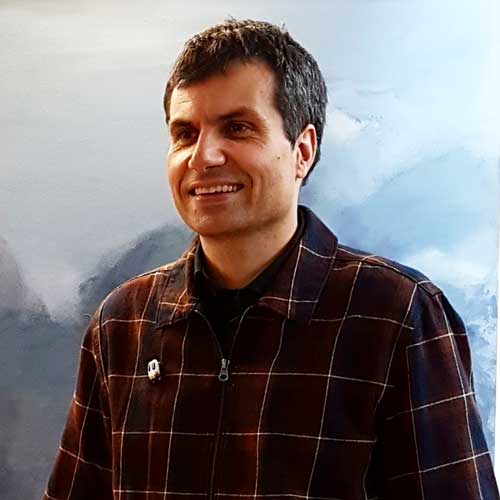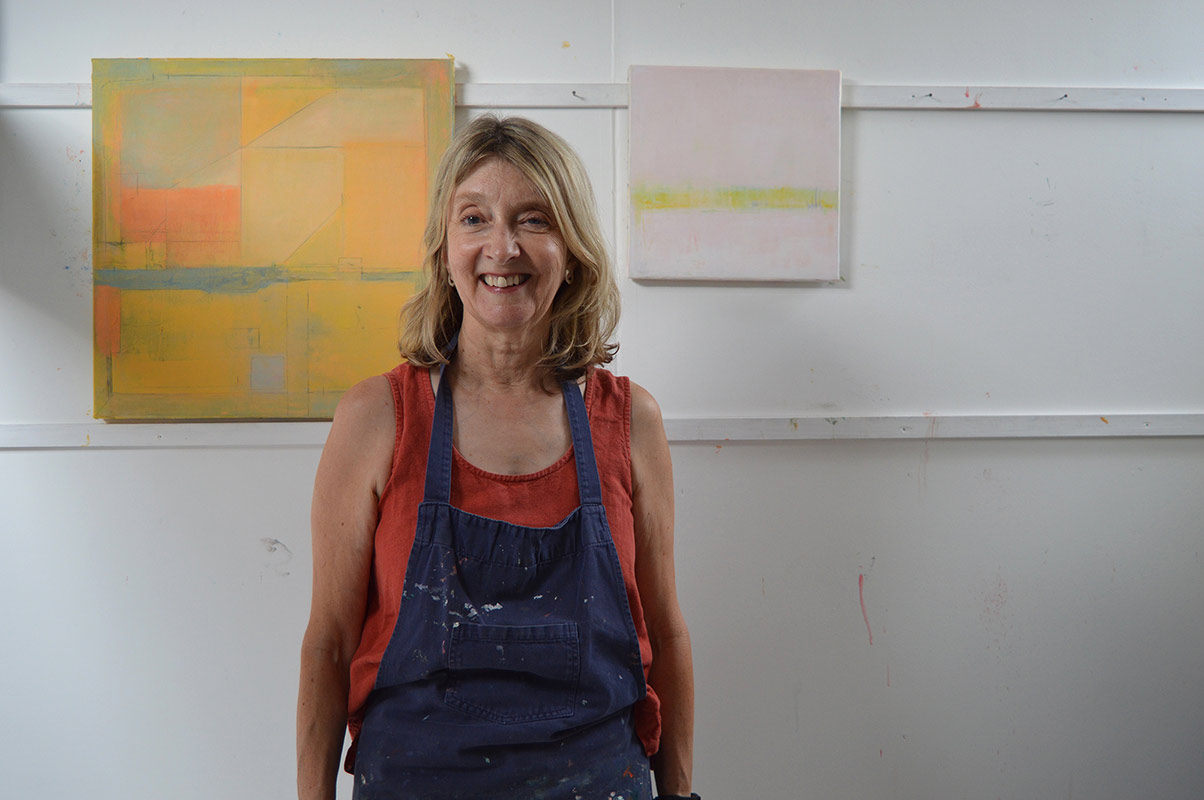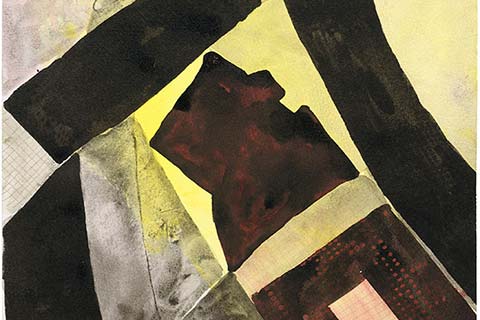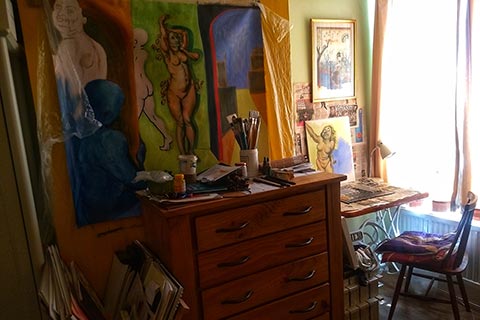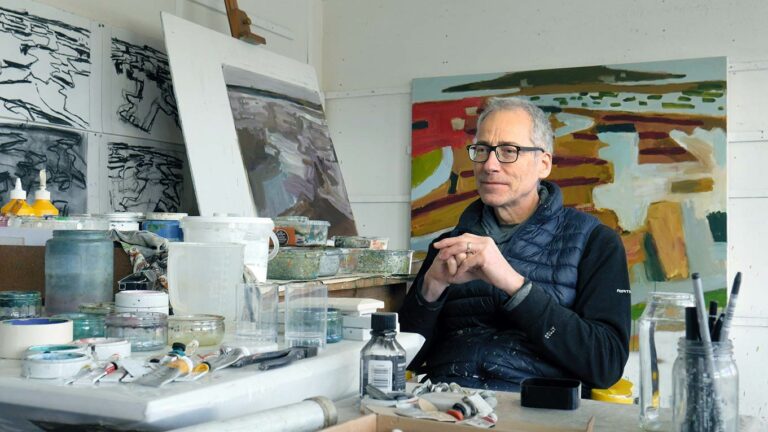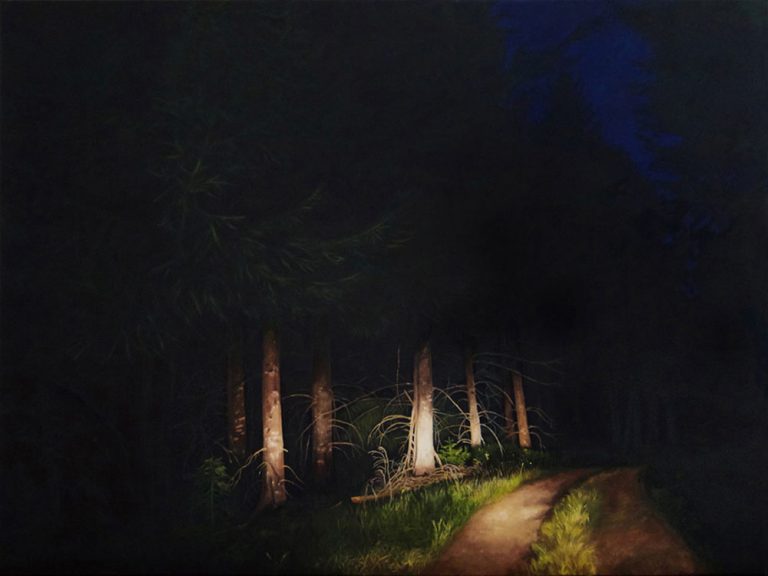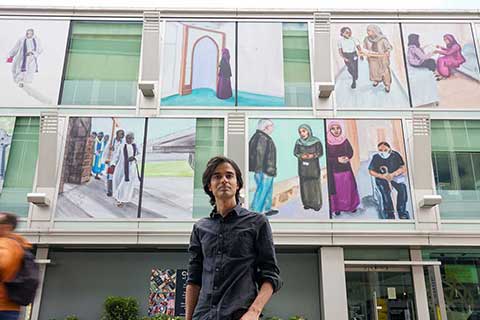Rachel Lancaster: Artist of the Month
Artist of the Month March 2023:
Rachel Lancaster, selected and interviewed by Paul Newman for CBP.
Rachel Lancaster’s practice is focused on painting and its intersections with the languages of cinema, music and photography. Photographic ‘stills’ from found moving imagery, alongside an archive of her own photographs are selected from, edited and then translated into oil paintings. Lancaster’s paintings represent detailed fragments of a greater narrative. She is drawn to seemingly insignificant passing shots, extreme close ups of inanimate objects, common place domestic interiors; the split second moments that are “in-between” the action. Divorced physically from their position within a narrative structure, these paintings become abstract, ambiguous and open ended as to the unknown events which have preceded or may follow…
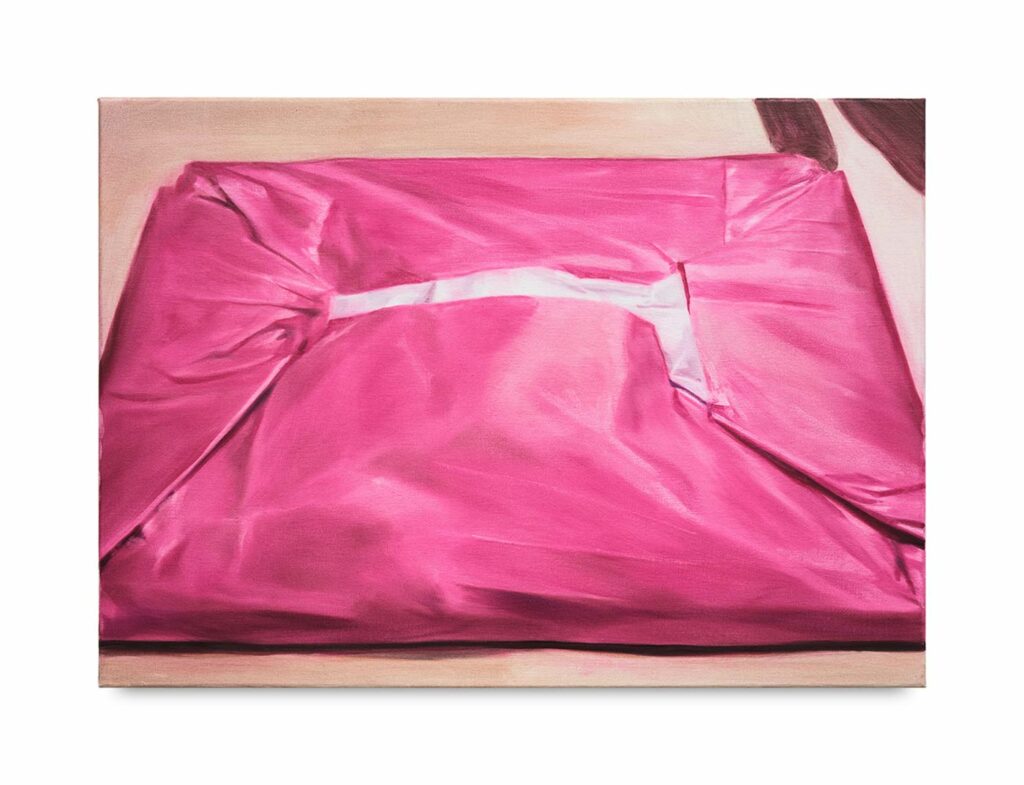
CBP: Your enigmatic paintings reveal fleeting interior moments. Understanding broadly you work from photographs or film stills, can you introduce some of themes that inspire your painting?
RL: My recent work uses photographic stills which I take from moving images from a variety of sources – I take hundreds of images which are then narrowed down through selection process to only a few which are then painted. Theme wise I am interested in passing moments or the ‘in-between’, using painting as a way to make the fleeting permanent. Influenced by the traditions of Vanitas and still life painting, I am interested in the ways in which the formal aspects of painting can be used to stir ideas of narrative and our desire to connect isolated imagery to a wider story.
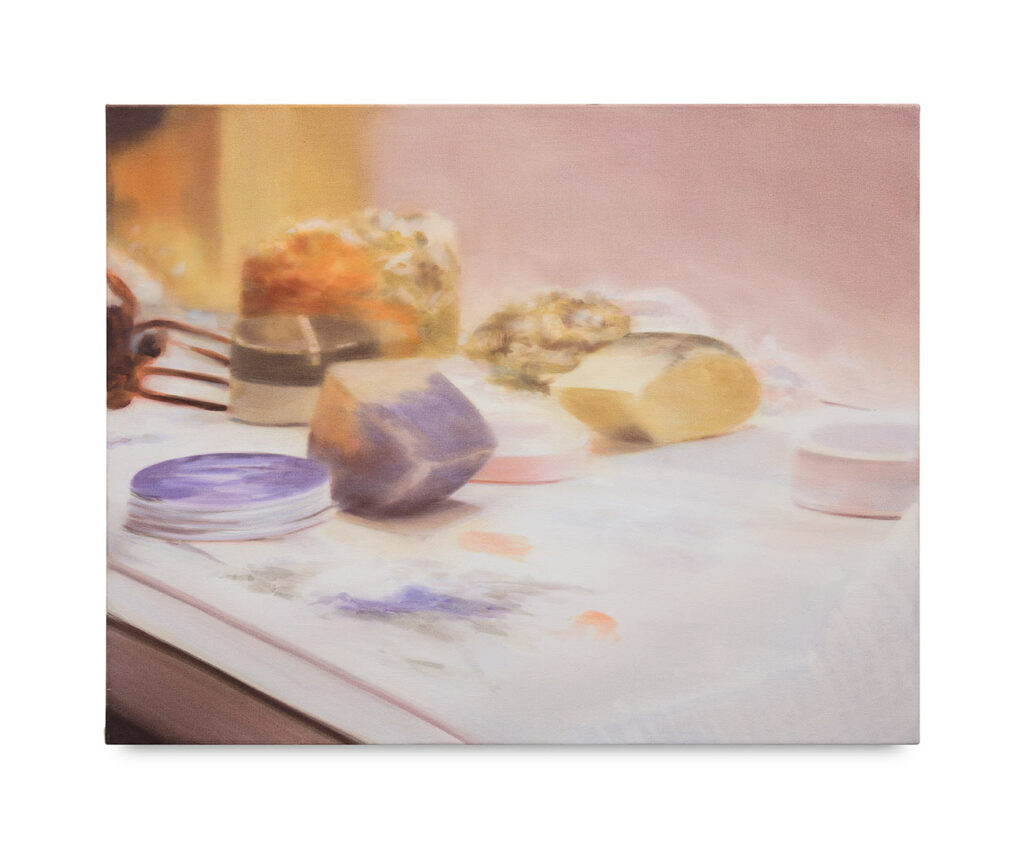
CBP: In relation to film and photographic stills, the paintings present predominantly close up to occasional medium shots of their subject, like the casual still life of ‘In Ghost light’, or the freeze framed movement of ‘T shirt’. Is there a particular type of subject scale and cropping that you look for to create your paintings from?
RL: When choosing images to paint from I often think about the relationship of the subject matter to life size and how this could be manipulated when the image is remade in paint. The objects in the paintings might be presented a little larger than life size. Sometimes I will be drawn to images in which there is more of an extreme zoom in/close up – so that when the image is painted the the subject matter is a lot larger than life size – this enables the viewer to linger on details of the object and their particular texture, surface that would otherwise perhaps not be seen if presented on a smaller scale.
Cropping is really important in my work in isolating the subject matter and distancing it from the original source material. I often like to use extreme cropping and thinking about how the edges of the image can be used as a trigger to make the viewer think about what lies beyond the images shown and to create a sense of a greater narrative to connect the image in the painting to. I often use cropping as a way to hint at a human presence just out of view.
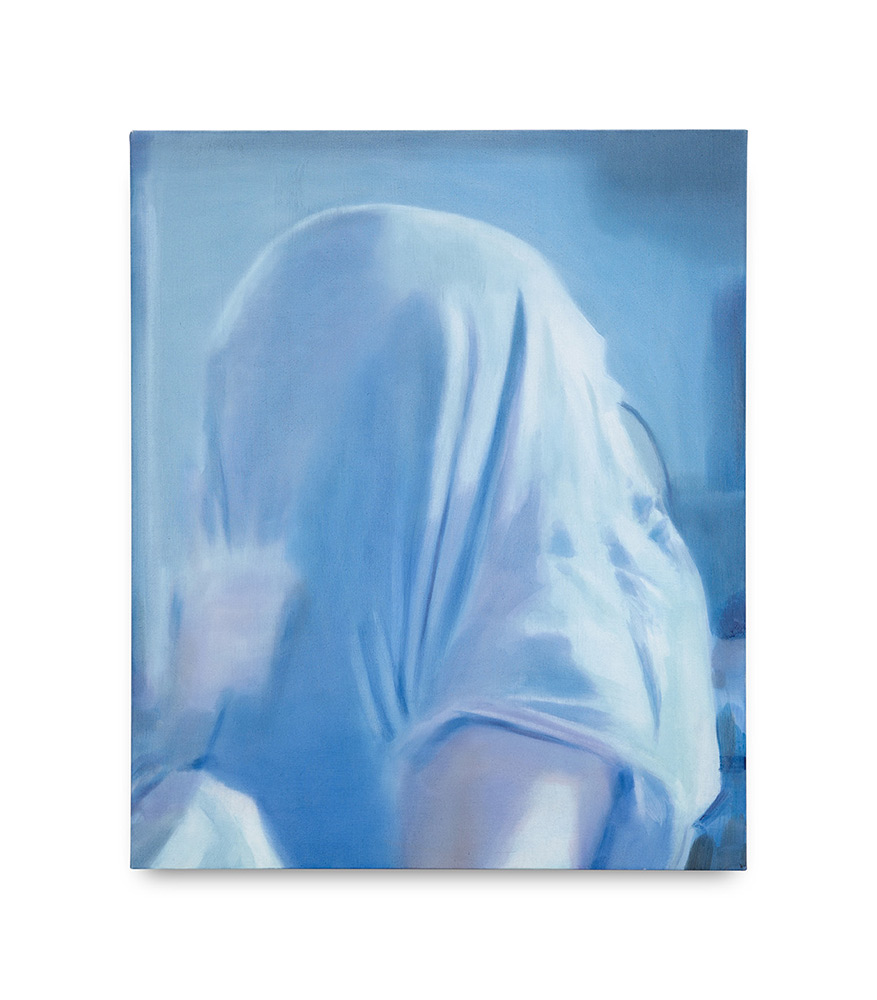
CBP: It feels like you want to keep the source of your paintings obscure, yet they feel relatable in terms of a feel or fleeting experiences. Can you talk about any personal experiences that may be in the work in relation to the sourced imagery you paint from?
RL: Yes I like the exact source of my imagery to remain unknown as this helps to keep the image open ended. I like the idea that the viewer will enjoy the not knowing exactly what is happening in the image and where it is from and will bring their own experience to understanding what’s going on in the painting. I think the fleeting feeling of the imagery has a relationship to how memory works and how memory is often experienced as ‘flashes’ of imagery, at least that is the case for me. I try to chose images which have a sense of being recognisable on one level but that also have an element of mystery at the same.
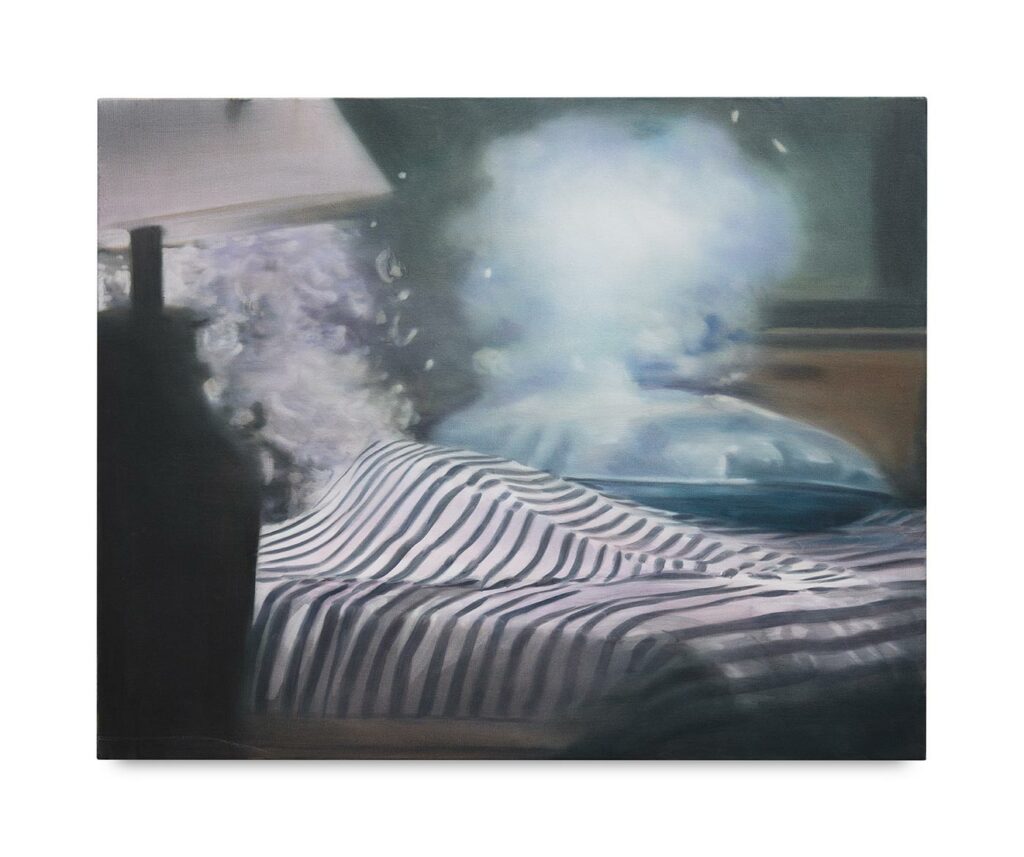
CBP: The imagery ranges from pausing on objects like gift wrapped parcels, to the in-motion drama of exploding pillow cases in ‘Sleep Grip’, the title of which adds a lot to the interpretation of the work. Can you talk a little about this painting?
RL: Up until recently the majority of my paintings have been untitled. ‘Sleep Grip’ is a recent painting I have made since beginning to title my work. The title refers to the act of trying to remember and trying to ‘grip’ or hold information. This is also reflected in the paint itself in trying to fix or freeze the moment in paint and the sense of stillness and movement that exists at the same time. The colour from the source imagery was deliberately heightened to make the image seem more dream like and vivid. Passages of different kinds of marks are used to try to replicate the push-pull between fuzziness and clarity that we often experience when dreaming.
CBP: How do you think about your work in series, with interconnected if unspoken narratives and repetitions of imagery and moments?
RL: I sometimes work in a more obviously connected series – for example an ongoing series of ‘Parcel’ or ‘Costume’ paintings, giving myself a narrowed down subject matter and format to create a painting. But largely when working in the studio I think the painting has to work isolated on its own terms first and then later I think about how the work relates to each other. There are threads which run through the paintings but I see each one as having its own narrative/moment.
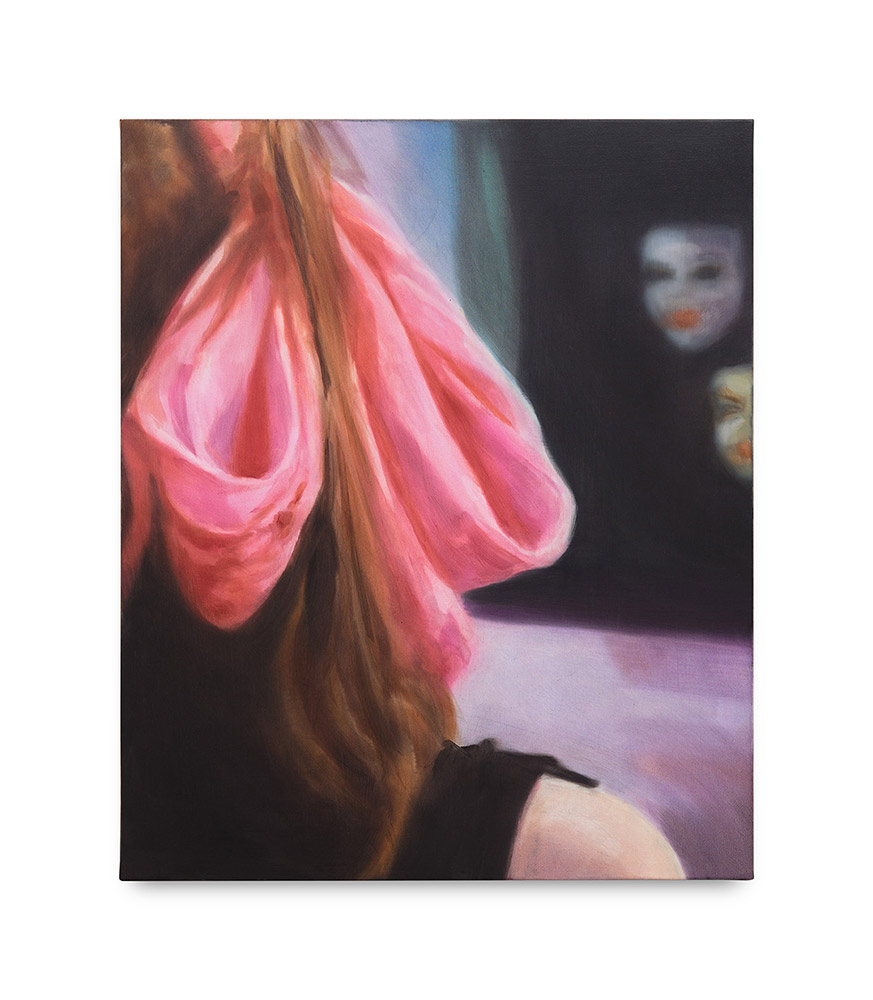
CBP: The patina of the paintings, their colour and translucency evokes a particular atmosphere; partly nostalgic, or perhaps referencing a faded polaroid or paused vhs screen still. Are there aspects of your source material that influence your colour palette, or is it more intuitive to generate the dreamy, ambiguous nature of the work?
RL: I’m drawn to imagery from the 1980s and 1990s and the particular sense of graininess present in imagery shot on film at this time. There is a ‘noise’ and visual distortion present on video and film rather than footage shot digitally. Perhaps I am influenced by this because these are the decades I grew up in absorbing imagery through watching VHS tapes and physical rather digital formats. I like using light and colour in my work to evoke the sense of a certain era and for the paintings to have an almost backlit quality as if the light is shining through the paint from the back, similar to watching luminous images on a TV screen.
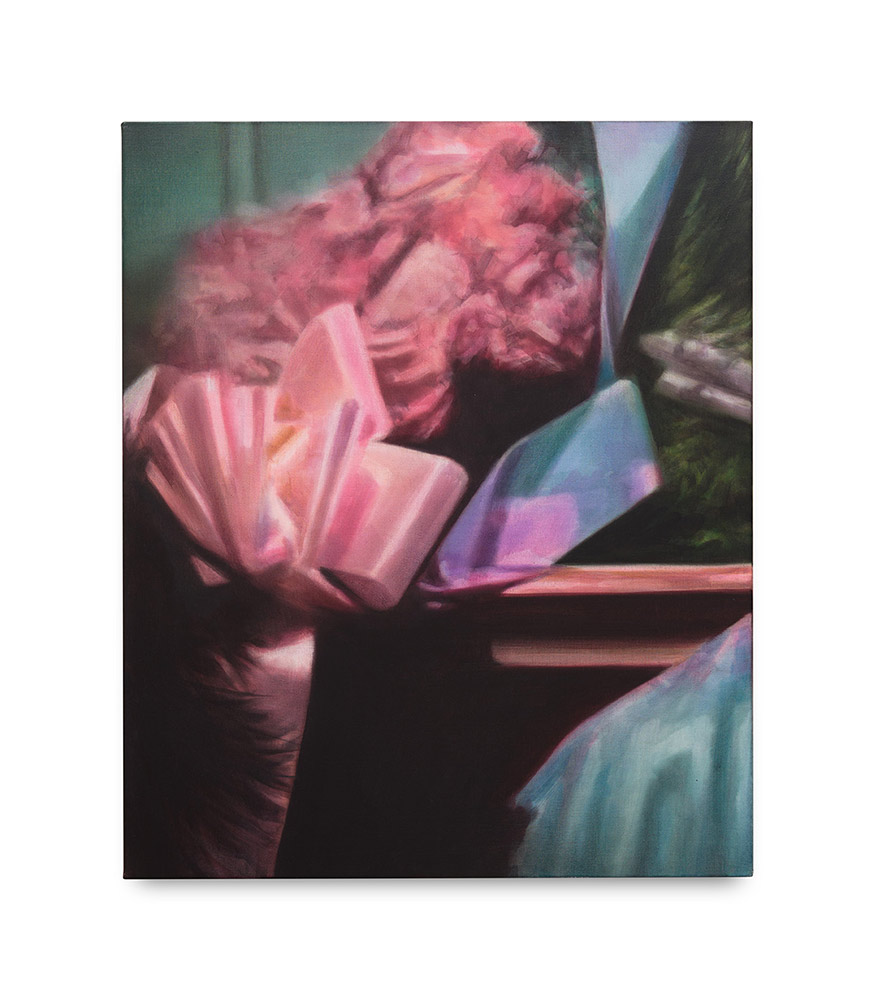
CBP: Can you talk about your painting process and about what changes in translation from source material through to the finished painting with its own object and subject identity?
RL: Drawing is an integral part of my painting process – I always make a charcoal drawing from the source photograph first. This allows me to familiarise myself with the image and to begin to figure out what I feel is important, what I would like to emphasise and which elements to edit out. The process of drawing in charcoal is used to help me to explore how I will translate the information in the photograph into hand made marks. Through the process of drawing I also decide on where to crop the image. Cropping is really important in controlling the information given to the viewer and to help separate the image from its original context.
Each painting begins with a clear intention – my decisions are then dictated by this. This intention is usually a specific feeling or atmosphere. I often exaggerate certain elements in the source material to emphasise this specific intention I have for the painting, manipulating a certain colour or sense light or editing out any distracting information. Building the colour up in thin layers of paint allows the surface to have a hovering, fleeting feeling giving them a dream-like, almost vacuum sealed atmosphere all of its own which distances the finished paintings from the the source material.
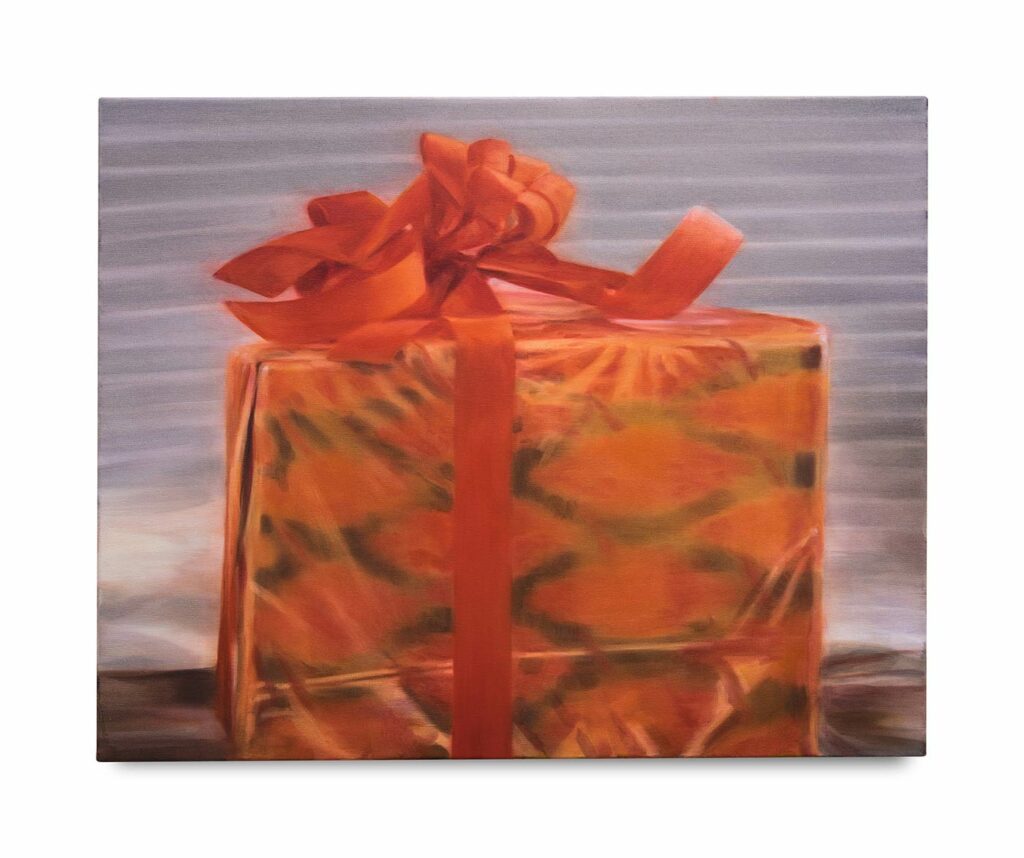
CBP: You document your paintings online in a particular way, with a consistently measured white wall border around the work. It looks at first glance that it could be read as part of the work or elude to a reproduction of a painting in a book. This could be an allusion to mediated imagery, its translation from photograph to painting to photographic documentation of it. It maybe just the best to present your physical paintings online. Can you discuss this aspect of the documentation?
RL: The works are documented in this way as I feel this best reproduces the experience of looking at the paintings in the flesh, as you would see them when hung on a gallery wall. I think it is important to see the edges of the paintings in a reproduction. This extra wall space around the edge also helps give the feeling of the painting being a ‘window’ into a different reality or ‘other’ space.
Rachel Lancaster lives and works in Newcastle Upon Tyne. She has exhibited widely and taken part in numerous projects, performances and artist residencies both nationally and internationally.
In 2015 she was invited to be ‘Artist In Residence’ at Alewive Brook Road in New York, former residence and studio of Elaine De Kooning.
Lancaster was shortlisted for the Contemporary British Painting Prize 2018 and the BEEP Painting Prize 2020. Lancaster is a selected member of the Workplace Foundation Community of Artists and in 2021 was invited to become a member of Contemporary British Painting.
In 2022 Lancaster was the joint winner of the BEEP Painting Prize and winner of the Ares Mosaic Art Award.



